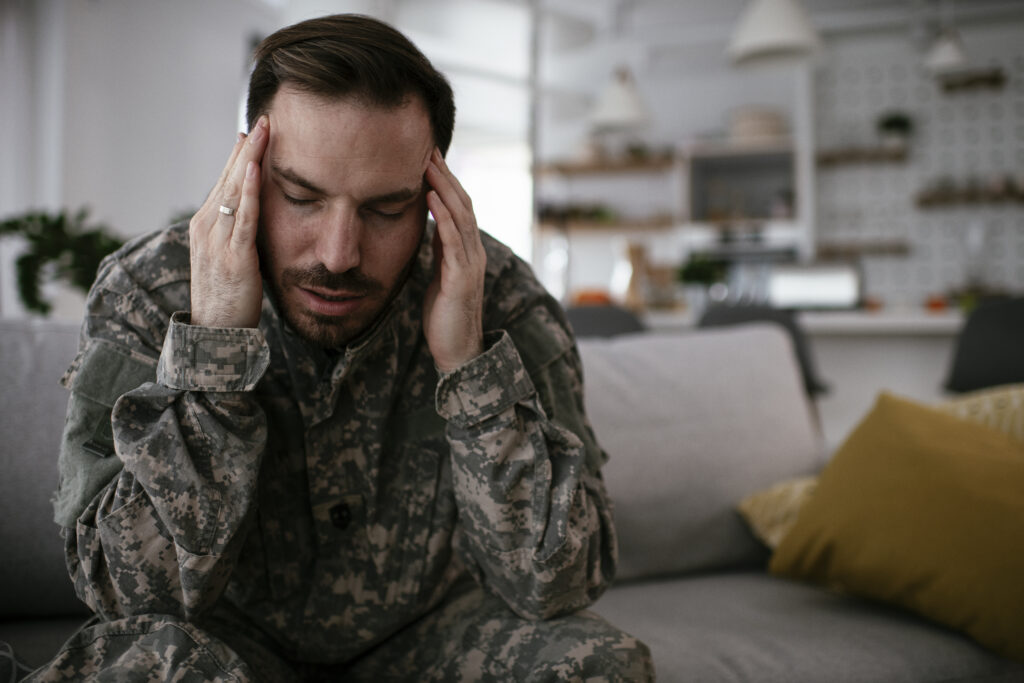
Recently, the U.S Pain Foundation hosted a webinar, “Veterans and Headache: How to Find the Support You Need,” that specifically spoke to the issues veterans with migraine and headache diseases face.
Our panel featured medical experts from the U.S. Department of Veterans Affairs (VA) who offered advice and provided additional details on the VA’s new Headache Centers of Excellence, along with veterans who have lived with headache for years. The discussion was moderated by Pain Connection clinical director Gwenn Herman, LCSW, DCSW.
Headache and migraine diseases are prevalent throughout the veteran community, with the U.S. Department of Veteran Affairs (VA) highlighting a study that showed “36 percent of Veterans who had completed a 12-month deployment to Iraq were either diagnosed with or exhibited symptoms of migraine.”
“There’s a great need for specialized headache care within the veteran population,” said Emmanuelle Schindler, MD, PhD., the Medical Director of the Headache Center of Excellence at Veterans Affairs Connecticut Healthcare System, highlighting the high number of traumatic brain injuries in the military and how often these can lead to headache and migraine disease.
“We’re very interested in exploring how to both get effective multidisciplinary approaches to patients and how to make sure that patients are identified early, get aggressive, appropriate treatment, and then are supported and then receive continuing treatments that they find to be effective,” said Elizabeth Seng, PhD., a headache psychologist and the Deputy Director of the Research and Evaluation Center for the VA Headache Centers of Excellence.
Unfortunately, veterans can find it difficult to reach out for support.
“We’re expected to be in top physical and mental condition at all times,” said Kate Benson, a Coast Guard veteran who leads Pain Connection’s “Basic Training for Veterans with Pain” support group. “So to admit that something might be wrong—especially something that a supervisor can’t see—is very difficult.”
Cheryl McJoy, a veteran of the U.S. Navy with migraine, explained that in the military you are trained to have “that warrior mindset,” she said. “And warriors don’t get sick. Warriors don’t have diseases, warriors don’t take time off, you just push through, or you just take some Motrin, and you just proceed to do what you have to do.”
Even when there is an issue, veterans and service members can be unsure what kind of help they need.
“I started having issues back around 2003,” said John Abel, an active member of the Coast Guard who plans to retire next year. “I didn’t even know I had migraines. I just thought they were headaches.”
Finally in 2015, after a suggestion from his wife, John received treatment in the form of botulinum toxin shots which have provided relief.
The panel encouraged veterans struggling with headache and migraine diseases to find help, whether it be through a VA in their area, or by attending support groups that give veterans an opportunity to share their stories in a safe, private environment among peers. Most importantly, the panel wanted to stress to viewers that even in the darkest of times, it can get better.
“Keep in mind that hopefully, tomorrow will be a better day for you, pain-wise,” Kate said.
Panelists for this webinar included:
Dr. Elizabeth Seng
Dr. Seng is a headache psychologist and the Deputy Director of the Research and Evaluation Center for the VA Headache Centers of Excellence. She is also an Associate Professor at Yeshiva University and Albert Einstein College of Medicine, where she and her lab use mobile health tools to understand migraine precipitants and test behavioral treatments.
Dr. Emmanuelle Schindler
Dr. Schindler is Medical Director of the Headache Center of Excellence at Veterans Affairs Connecticut Healthcare System and Assistant Professor of Neurology at Yale School of Medicine. Among her efforts to optimize the management of headache disorders, she has expanded the options for the treatment of refractory headache at VA Connecticut and she has developed and executed clinical trials investigating a novel preventive agent.
Kate Benson
Kate is a Coast Guard veteran and a trained U.S. Pain Foundation leader. She spent 12 years serving in the Coast Guard before thyroid cancer, chronic migraine, and a painful condition called trigeminal neuralgia put an unexpected end to her military career. Kate leads Pain Connection’s “Basic Training for Veterans with Pain” support group, and was featured in a past issue of the INvisible Project.
Cheryl McJoy
Cheryl is a veteran of the U.S. Navy who was featured in the latest edition of the INvisible Project. Cheryl was diagnosed with chronic headache and migraine after falling while repairing an engine on a P-3C Orion Aircraft in Okinawa, Japan.
John Abel
John is an active member of the U.S. Coast Guard Veteran who has been serving for 20 years. He started getting migraine in about 2003, but they were undiagnosed until 2017. Today he receives medical treatment from military doctors and believes his migraine to be managed.
